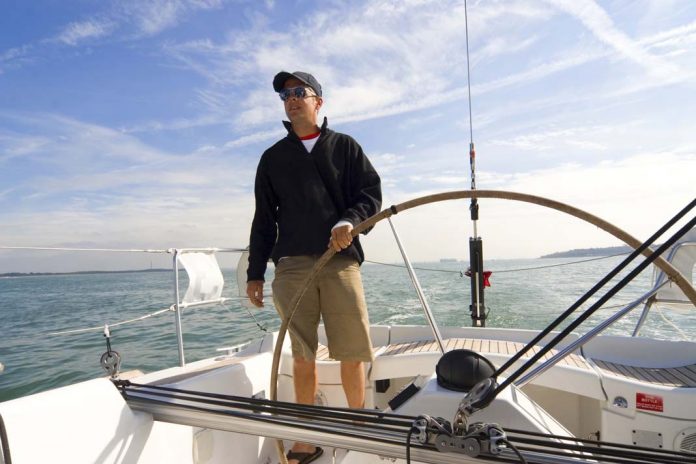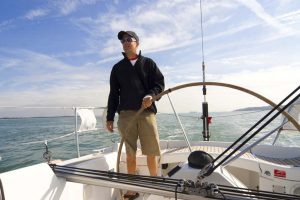

Why Sailing the Long Tack First is a Winning Move
The long tack is the one that points your bow closest to the mark. Its the one you spend the longest time on when heading upwind to the weather mark.
The long tack takes you towards the centre of the course and the centre of the course is directly downwind of the mark.
When sailing the long tack first, you still need to be mindful of what the wind is doing but if you are not sure of what the wind will do next it is a rule of thumb that you must use.
The reason it works is that staying centred gives you more options when the wind shifts in either direction.
If you are certain about what will happen with the next shift or puff you can disregard sailing the long tack first.
The benefits of sailing the long tack first are greatest when:
- You are uncertain about what the wind will do
- The longer tack is much longer than the short tack
- You are either in the early to mid part of the beat. Getting close to lay lines too soon really limits your options but remember as you get close to the mark, tactics and position become more important than the long tack.
How to use this rule of thumb in the context of various conditions:
- Oscillating Breeze – In a truly oscillating breeze, with regular shifts around an average direction, sail the shortest distance by sailing the lifted tack as much as possible.
- Random Shifts – When you can’t find a pattern to the shifts, sailing the long tack might become your primary strategy. Tack on the large headers, but don’t be a slave to your compass. If you’re not pointed at the mark, think about tacking.
- One side is advantaged – if due to more wind or a persistent shift, you may end up sailing the short tack first to get to that side. However, once you reach that advantage, continuing further on the short tack becomes much riskier.
- Light or variable pressure – either connecting the puffs or sailing to the side where there is more wind means that we should ignore the long tack strategy.
When sailing off the wind, the same principle applies, sail the long gybe first. The exceptions above as they still apply even though you are travelling downwind.

